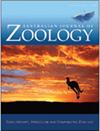监测方法的选择会影响脊椎动物群对人工空洞使用情况的估计
IF 1
4区 生物学
Q3 ZOOLOGY
引用次数: 1
摘要
空心树的消失是许多依赖空心的类群面临的主要威胁。巢箱已被广泛用于抵消树木空洞的损失,但它们的损耗率很高,而且通常目标物种的使用率很低。为了解决这些问题,电锯雕刻的空洞(在树上切割的人工空洞)已经成为一种流行的替代方法,但关于其有效性的研究很少发表。我们使用传统的检查方法和远程摄像机观察了新南威尔士州中西部依赖洞穴的动物群对150个电锯雕刻的洞穴的使用情况。在2017年10月至2019年4月期间,我们在链锯雕刻的空心中检测到21种脊椎动物(2种爬行动物、1种两栖动物、10种鸟类和8种哺乳动物),但检测到的物种数量取决于所选择的监测方法。我们在物理检查中检测到6种物种在空洞中,而远程摄像机检测到21种物种进入空洞。摄像机检测到有8种物种利用洞穴作为繁殖地点,而实地检查只发现了4种物种。摄像机检测到两种濒临灭绝的哺乳动物(松鼠滑翔机(peauros norfolcensis)和大滑翔机(peauroides volans))在洞穴中养育幼仔,但我们在实地检查时未能发现这些物种。对于鸟类,这两种方法在检测繁殖事件方面产生了相同的结果。总的来说,我们的研究表明,很少有依赖洞穴的物种使用链锯雕刻的洞穴作为繁殖地点。这突出表明,在大型树木和植被恢复项目中,人工空洞并不能替代自然形成的空洞。本文章由计算机程序翻译,如有差异,请以英文原文为准。
Choice of monitoring method can influence estimates of usage of artificial hollows by vertebrate fauna
ABSTRACT The loss of hollow-bearing trees is a key threat for many hollow-dependent taxa. Nesting boxes have been widely used to offset tree hollow loss, but they have high rates of attrition, and, often, low rates of usage by target species. To counter these problems, chainsaw carved hollows (artificial cavities cut into trees) have become a popular alternative, yet little research has been published on their effectiveness. We examined the usage of 150 chainsaw carved hollows by cavity-dependent fauna in the central west of New South Wales using observations from traditional inspection methods and remote cameras. Between October 2017 and April 2019, we detected 21 species of vertebrates (two reptile, one amphibian, 10 bird, and eight mammal species) inside chainsaw carved hollows, but the number of species detected was dependent on the chosen monitoring method. We detected six species inside hollows during physical inspections, whereas remote cameras detected 21 species entering hollows. Cameras detected eight species using hollows as breeding sites, whereas physical inspections detected just four species. Cameras detected two threatened mammals (squirrel glider (Petaurus norfolcensis) and greater glider (Petauroides volans)) raising young inside hollows, yet we failed to detect these species during physical inspections. For birds, the two methods yielded equivalent results for detection of breeding events. Overall, our study showed that few cavity-dependent species used chainsaw carved hollows as breeding sites. This highlights how artificial hollows are not a substitute for retaining naturally occurring hollows in large trees and revegetation programs.
求助全文
通过发布文献求助,成功后即可免费获取论文全文。
去求助
来源期刊
CiteScore
2.40
自引率
0.00%
发文量
12
审稿时长
>12 weeks
期刊介绍:
Australian Journal of Zoology is an international journal publishing contributions on evolutionary, molecular and comparative zoology. The journal focuses on Australasian fauna but also includes high-quality research from any region that has broader practical or theoretical relevance or that demonstrates a conceptual advance to any aspect of zoology. Subject areas include, but are not limited to: anatomy, physiology, molecular biology, genetics, reproductive biology, developmental biology, parasitology, morphology, behaviour, ecology, zoogeography, systematics and evolution.
Australian Journal of Zoology is a valuable resource for professional zoologists, research scientists, resource managers, environmental consultants, students and amateurs interested in any aspect of the scientific study of animals.
Australian Journal of Zoology is published with the endorsement of the Commonwealth Scientific and Industrial Research Organisation (CSIRO) and the Australian Academy of Science.

 求助内容:
求助内容: 应助结果提醒方式:
应助结果提醒方式:


